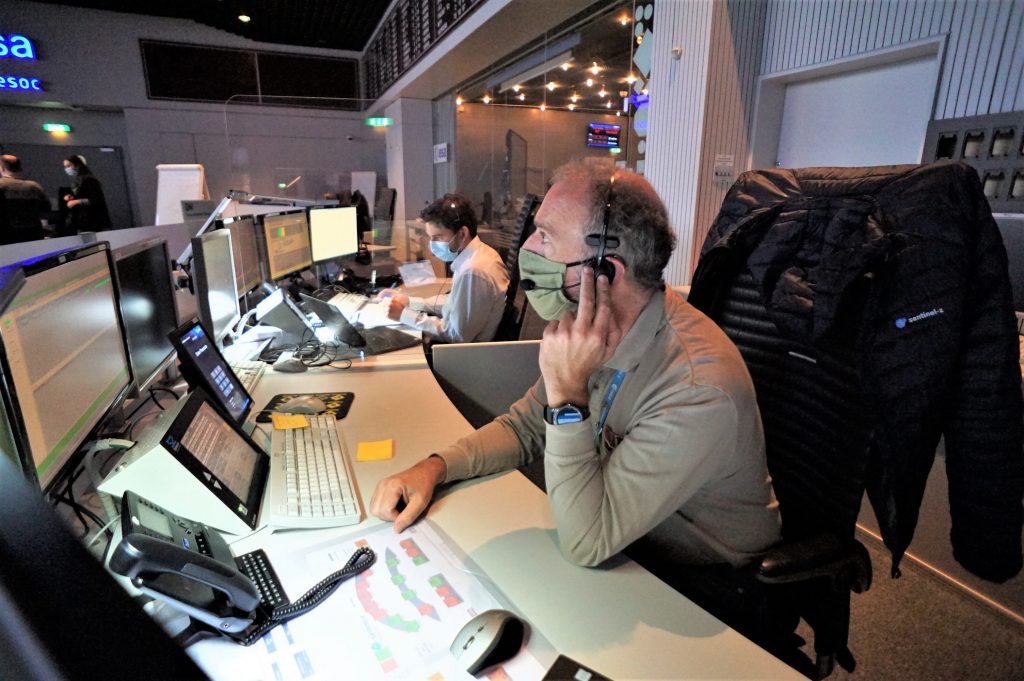After months practising the critical ‘Launch and Early Orbit Phase’ with a simulated spacecraft, the control team at ESA’s Operations Centre are ready for liftoff with the real thing.

Ground Operations Manager Brett Durret ‘on console’ in ESA’s Main Control Room. (Credits: ESA)
Once ESA’s mission control has guided the Sentinel through the critical early phase, configuring the spacecraft and performing two orbit manoeuvres to get it close to its final orbit, EUMETSAT – Europe’s weather satellite organisation – will then complete the final ‘orbit acquisition’ and take on responsibility for commissioning, routine operations and distribution of the mission’s vital data.
This Launch and Early Orbit Phase, or LEOP, is the most risky period in a spacecraft’s life. It’s the period in which the new spacecraft begins using its solar arrays for power, wakes up to test its core functioning and manoeuvres into the correct path, all the while at its most vulnerable to the hazards of space.
Copernicus Sentinel-6 Michael Freilich needs to fly in tandem with the Jason 3 spacecraft it is replacing, falling into position behind it with a separation of just 30 seconds, or about 230 kilometres.
This is why simulations and dress rehearsals are so important – they give the team the chance to go through seamless scenarios as well as problem-solve and brainstorm during ones in which something goes wrong.
Read more about the Copernicus Sentinel-6 mission.

Discussion: no comments